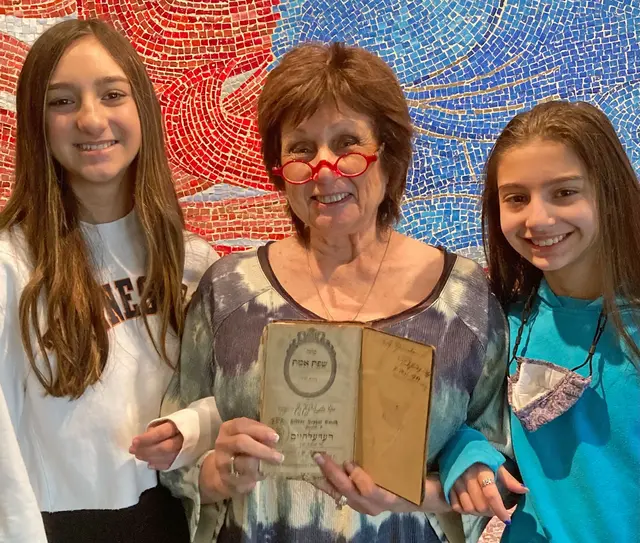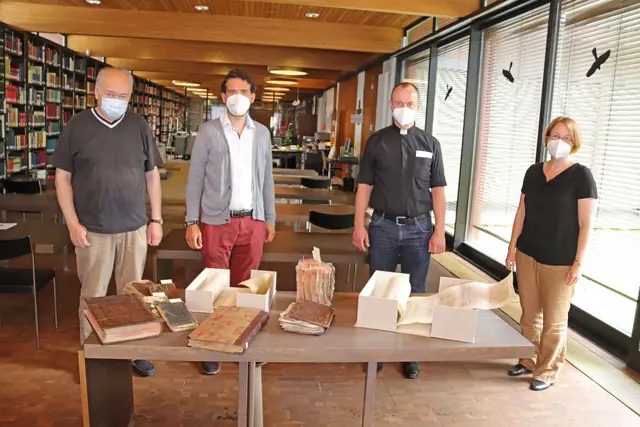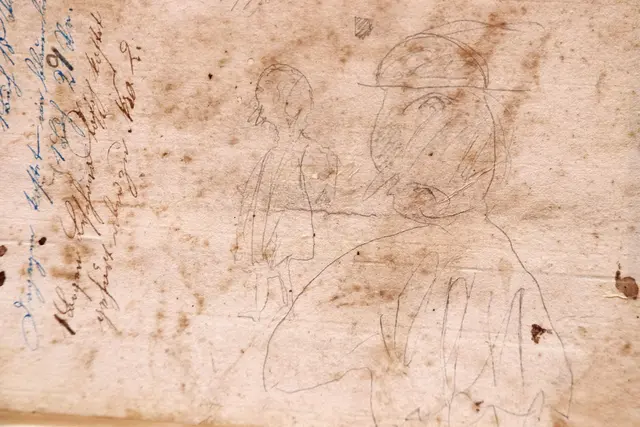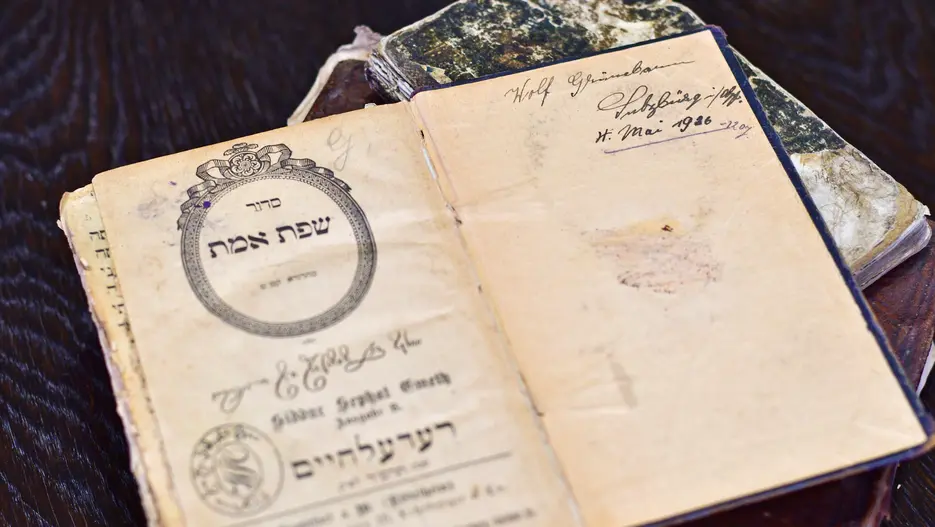Sylvia was only born in August 1949 and never got to know her grandfather Wolf Grünebaum. In 1940, her father Alfred, his wife Irma and their son Joachim, born in 1937, managed to flee to the USA. Alfred’s brother Justin was also able to flee by other means, initially to Canada, later to the USA. But Wolf Grünebaum could not be persuaded by his sons to flee. He stayed in Sulzbürg in the Upper Palatinate until the end. He had fought for Germany as a soldier in World War I and hoped – as he is often said to have replied to his sons – that his status as a war veteran would protect him.
Tracing blurred lifelines: Holocaust victim’s prayer book back in family possession

Grünebaum’s granddaughter, Sylvia Gruen Salomon, now lives in Nashville, Tennessee. She says: “The return of my grandfather’s Sidur to our family means a lot to me and all our relatives! It is the only artifact we have of my father’s father. Not a single item has survived from my maternal grandparents.” Sylvia Salomon had originally planned to give the book to her granddaughters in March – on the occasion of the two girls’ Bat Mitzvah ceremony that celebrates their religious coming of age. But the joy was so great that she has already given them the prayer book now. “The important work that has been done by so many to bring the book back to us cannot be praised enough”, says Sylvia Salomon. In the name of the Eichstätt Seminary, from the holdings of which the volume originates, Regens Michael Wohner adds: "Since in the Jewish faith, hope for the future is strengthened precisely from the memory of God's unbreakable presence and closeness in the most difficult times, I hope that the restituted prayer book of her grandfather can become a sign of hope for the Gruen Salomon family in their own lives."

There have been many parallel efforts by dedicated institutions and individuals that have finally joined forces to make the restitution of the book to the family possible. One starting point was a project of the KU University Library that had the goal of clarifying the origin of some 60 Hebrew works from the 17th to the 20th centuries that can be proven to have come from Sulzbürg. The collection belongs to the holdings of the Eichstätt Seminary, for which the University Library is also responsible as regards care and maintenance. A local clergyperson working in Sulzbürg from 1944 had handed the collection over to the former Regens of the Seminary, who then gave it to the seminary library in 1985. “Our concern and commitment was and is to clarify the ownership of the volumes and to preserve the collection by digitalizing it, which also makes it more widely accessible”, says Dr. Heike Riedel. She is the head of the department of historical collections at the University Library. It was not possible to conclusively clarify which hands the copies had passed through before and after 1942 within the context of this project. On the one hand, the work, which was funded by the German Lost Art Foundation, resulted in an exhibition of the books at their place of origin in Sulzbürg, which was on display there until the beginning of the year. On the other hand, a working group of individuals with diverse expertise was founded for the project, who in turn provided new impulses to carry out further research on the lifelines and descendants of the former book owners.

In addition to the emeritus theology professor Dr. Erich Naab from Eichstätt, Prof. Dr. Heide Inhetveen was also a member of this circle. The sociologist, who was born in Neumarkt in der Oberpfalz, has lived in Sulzbürg since 1959 – the only place in the Upper Palatinate, as she points out, with 500 years of unbroken Jewish history. “Given these roots, I have long felt it was my mission and duty to get active in remembrance culture and reconciliation work during my retirement”, emphasizes Inhetveen. A local resident of Sulzbürg who is a historian as a hobby had told her that as a child, he had often seen Wolf Grünebaum and his wife Amalie sitting on the bench in front of their house. Grünebaum was the village’s butcher and cattle dealer and was a very committed member of the men’s choir there. He wrote the lines for a song that is still sung in Sulzbürg today. In addition, Wolf Grünebaum was a member of the Sulzbürg municipal council in the 1920s and was the head of the Jewish religious community from 1931 until he was deported. Inhetveen remembers: “Already in the 1920s, many Jewish families left the village. After the Nuremberg Laws in 1935, the pressure on the Jewish population became more and more intense, also in the small mountain village of Sulzbürg. Those who could, left the place and tried to hide in bigger cities or to get abroad.”

Inhetveen is co-founder and spokesperson of the “Stolperstein” initiative (cobblestone-sized memorials) in Neumarkt and Sulzbürg. For many years, this art project has been used throughout Germany and Europe to commemorate the fate of victims of National Socialism in their former places of residence. It was also in this context that she intensified her research into the fate of Wolf and Amalie Grünebaum. Inhetveen stumbled across documents in the archives of the Dachau Memorial in which the two sons Alfred and Justin Grünebaum are mentioned. Both were imprisoned in Dachau for several weeks in the course of the November pogroms of 1938. This was also a decisive factor for Alfred and Justin to leave Germany for good.
Through her research in the memorial, Inhetveen also got in touch with the high school student Mileen Sentürk, who also carried out research on Alfred Grünebaum for a term paper and had even tracked down Sylvia Gruen Salomon in the United States. This was the starting point for further contact with the granddaughter of the man whose ownership note was left in the Jewish prayer book, which is now back in family possession. The student also drew Inhetveen’s attention to the local historian Wolf-Dieter Gutsch in Prichsenstadt in Franconia, where Alfred Grünebaum had lived for many years and worked as a teacher. “Precisely because this kind of ‘research collective’ often includes people who have not studied history, values such as generosity and helping each other are key to uncover and trace blurred lifelines”, concludes Inhetveen. Since November last year, two Stolpersteine in Sulzbürg now commemorate the fate of Wolf and Amalie Grünebaum.
